
Fat To Fit: Hunter Labrada's Definitive Guide To Weight Loss
For far too many people, losing weight has involved struggling and suffering to meet totally arbitrary caloric standards. This plan will help you get lean based on your body, background, and experience level!
If only seasons were like cities. Then we could say, "What happens during winter stays in winter." Instead, when spring rolls around, most of us have a very visible reminder of what we did—and ate—over the holidays, and a nice round number to match!
Sure, it would be great if everyone stayed shredded year-round, but they don't. People typically get lean for a reason: summer months, swimming pools, and sunshine, for instance. The sad part is that, for as long as people have been following this cycle, they've been following misinformation about the best way to get the job done.
Some people will just tell you that facts are facts. Consume fewer calories than you burn, and you'll lose body fat. Simple enough, right? If only! That axiom tells you nothing about how big of a caloric deficit to run, which foods to eat, and how to preserve as much muscle tissue as possible while losing fat.
I'm here to answer those questions, showing you how to calculate a personalized daily caloric deficit based on your goals and background. I'll also tell you which foods you should eat, how you should arrange your macronutrient intake, and which supplements can help you keep performing at your best in the gym while you're cutting weight.
This is what you've been waiting for, so let's jump right in!
Question 1 What is my caloric baseline?
The road to a smart cut doesn't start with a certain supplement or calorie count. It starts with knowing what your body needs—and specifically your BMR, or basal metabolic rate.
Your BMR is the rate at which your body burns calories at rest just to sustain life. That may sound fairly universal, but it's actually quite personal, and depends on a number of factors including genetics, body composition, and age. For most people, it will range between 50-80 calories per hour, or 1,200-1,920 calories per day.

The most widely accepted formula to determine BMR—and the one I prefer—is the Mifflin-St. Jeor equation. It looks like this:
Running the numbers, I get a personal BMR of 2081. That means if I wasn't doing anything except existing, I would consume 2081 calories every day to do so. That may sound like a lot, but let me point something out: When most people try to lose weight, they consume minimal, if any, calories over their BMR!
This might be OK if you were a sedentary person who never got out of bed, but more likely, you're someone who also uses calories to power through your day, do your job, and train. The way we account for those is to multiply your BMR by an "activity factor." This will provide your total daily energy expenditure, or TDEE.
Total Daily Expenditure (TDEE) |
|||
| Activity Level | Activity Multiplier | ||
| Sedentary (little or no exercise) | BMR x 1.2 | ||
| Lightly active (easy exercise/sports 1-3 days/week) | BMR x 1.375 | ||
| Moderately active (moderate exercise/sports 3-5 days/week) | BMR x 1.55 | ||
| Very active (hard exercise/sports 6-7 days a week) | BMR x 1.725 | ||
| Extremely active (very hard exercise/sports and physical job) | BMR x 1.9 | ||
It's extremely important that you're honest with yourself here, as under- or overestimating due to personal pride can hamper—or even halt—your progress throughout your cut.
Most fit people, myself included, will fall into the moderately active category. We work normal, non-labor-intensive jobs and exercise hard 3-5 days per week. Those who fall into the "very active" category might have a job where they're on their feet all day and also exercise hard 4-5 days per week, or they participate in a sport that requires an immense amount of calories, like cycling or boxing.
Those who fit into the "extremely active" category are a rare breed. They work tough manual labor jobs such as construction, oilfield work, farming, or performance coaching—if you're one of the crazies that trains with the people you're training!—in addition to killing it in the gym nearly every day.
Know where you fit? Then use this calculator to combine your BMR and activity factor to determine your TDEE:
Calorie Calculator
Total Calories Including Exercise
* Mifflin-St. Jeor Equation
My TDEE is 3,226 calories. While this is still a rough estimate, I believe it to be a much better starting point than to just follow a "one size fits all" approach, because if there's one thing I've learned, it's that cookie-cutter diets don't work!
Question 2 How should I determine my caloric deficit?
So now that you know your TDEE, let's put it to use. You know that you'll need to maintain a caloric deficit—i.e., burn more than you consume—in order to lose weight, but how much of a deficit?
There's a wealth of misinformation out there, so before I present my preferred method, I want to go through three very popular—and unfortunately, less than optimal—ways to choose the size of your deficit.
Mistake Eating as little as you can
This is the most uncomfortable and dangerous choice. You give your body well below maintenance-level calories, meaning you don't even have enough fuel to function properly.
You set yourself up for failure because you get too hungry and become mentally and physically too tired to train effectively.
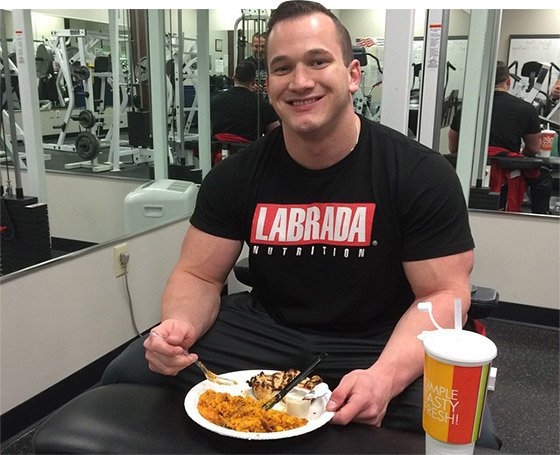
Mistake Cutting 500 calories from your day, no matter your TDEE
It's true, there are roughly 3500 calories in a pound of fat, so if you were to cut out 500 calories per day, you would be putting yourself on pace to lose about a pound of fat per week. Sounds like a great pace, right?
Here's the problem: If your TDEE is, say, 2000 calories, this 25-percent reduction in your daily calories could be severe enough to cause you to lose muscle—which slows down fat loss—and feel less than great both mentally and physically.
On the other hand, 500 taken out of a TDEE of 4000 calories would provide ample calories to function and train on, but fat loss would be slower than you'd wish. In either case, a more customized number would provide better results.
Mistake Choosing a caloric deficit by estimating calories needed per pound or kilogram of body weight for fat loss
The consensus is that this number is between 10-12 calories per pound of body weight (22-26.4 kcal/kg). While this is at least a customized recommendation based on body weight, it fails to factor in age and activity level, so it could easily recommend a deficit that is either too large or too small.
So now that you know what not to do, let's talk about a better way. In my opinion, the most effective and healthy method for fat loss is to consume a certain percentage under your TDEE. For simplicity's sake, we'll stick to three choices: small, medium, and large.
Percentage Consumed Under TDEE |
|||
| Size of deficit | Percentage reduction from TDEE | ||
| Small | 10-15% | ||
| Medium | 15-20% | ||
| Large | 25% or more | ||
Question 3 Which percentage is for me?

How you select the appropriate deficit is completely dependent on your goals and your current status, but three things should always be considered when choosing a deficit:
-
Fat loss The bigger the deficit, the more fat you'll lose. However, as it gets bigger, you also increase the risk of constantly feeling hungry or fatigued. Additionally, you may slow down recovery from your workouts and lose lean tissue.
-
Muscle loss A large caloric reduction might get you to your total weight-loss goal a month or two quicker than a small one, but you're much more likely to lose more muscle tissue using the large deficit.
-
Ability to maintain your selection The easier it is for you to stick to your diet, the more fat loss you will experience in the long run, so choose a deficit that is tailored to what matters the most to you.
Enjoy seeing results, hunger be damned? Maybe a large deficit is for you. On the other hand, if you don't like feeling hungry all the time and want to enjoy life a little, a small deficit for a longer period of time would probably be optimal.
Here are my recommendations for deficits based on common goals and dieting backgrounds:
Deficit Recommendations |
|||
| Goal/Dieting Background | Deficit Recommended | ||
| Maintain or improve athletic performance | Small, Medium | ||
| Diet to very low body-fat levels while preserving as much muscle mass as possible | Small | ||
| Lose large amounts of fat as quickly as possible | Large | ||
| Lose fat at a moderate rate while preserving muscle mass | Medium | ||
| Overwhelmed by the thought of restricting food or beginning/increasing exercise, resistant to lifestyle changes | Small | ||
| Feel hungry, lethargic, weak, foggy, or moody when dieting | Small, Medium | ||
| Easily discouraged by lack of results | Medium, Large | ||
| Easily discouraged by lack of results | Medium, Large | ||
| Problems with binge eating and/or yo-yo diets | Small, Medium | ||
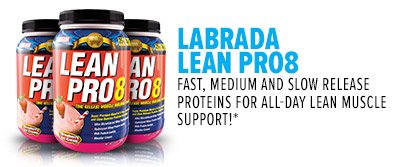


Question 4 What should I eat?
If you're arriving at this guide after a "dirty bulking season" filled with Big Macs, pizzas, and gallons of ice cream and sugary drinks, you're in for a rude awakening! As you already know if you've read my Guide To Muscle Growth, I'm against the all-out bulk. If you think I'd let that trash into my cut, you're dreaming!
Unlike my customized approach to calories, I favor a more universal approach when it comes to determining the percentages of your total daily calories that come from proteins, carbohydrates, and fats.
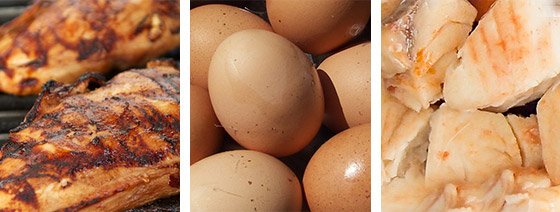
Here's why:
Protein 40 percent
When cutting, it's crucial to keep protein intake high, which will help preserve your muscle mass while your body burns fat. Additionally, higher-protein diets increase satiety compared to lower-protein diets.1
To take full advantage of the thermic effect of protein (i.e., the caloric cost of digesting and processing macronutrients), try to choose lean sources of protein, as higher-protein meals have been shown to exert a significantly higher thermic effect than higher-fat meals.2
Carbohydrates 30 percent
Carbs of all types have gotten an undeserved bad rap over the years with dieters. In truth, only some of them—the simple carbohydrates— are detrimental to a cutting diet.
Simple carbohydrates are made of just one or two sugar molecules. They're the quickest source of energy, as they are very rapidly digested. Because of their rapid digestion rate, the consumption of these carbs causes a rapid spike in insulin levels, potentially putting your body into a fat-storing state.
Post-workout simple carbs are beneficial to jump-start the recovery process, but once your muscles are saturated with glycogen, your body will begin to store excess glucose as fat.
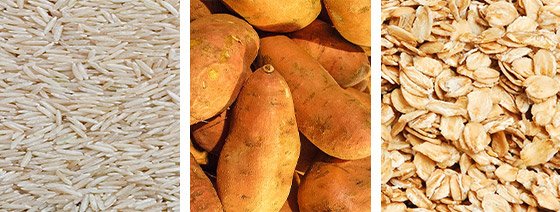
For that reason, I like to avoid all of these foods when cutting:
- Table sugar
- Brown sugar
- Corn syrup
- Honey
- Maple syrup
- Molasses
- Jams and jellies
- Soft drinks and sports drinks
- Fruit and fruit juice
Those last two might come as a shock, but fruits, despite having healthy antioxidants and vitamins, are a no-no when cutting, due to the fact that they're so high in simple sugars. Get your nutrients from your veggies and your multivitamin.
Now that we've covered the bad, let's talk about the good. Complex carbohydrates are made of sugar molecules that are strung together like a necklace or branched like a coil. They are commonly found in whole plant foods and, therefore, are also often high in vitamins, minerals, and fiber.
Unlike simple sugars, they provide your body with a slow-digesting energy source, meaning you'll stay fuller longer and enjoy more stable energy levels. You'll also make your body work harder to break them down, increasing your metabolism.
Finally, complex carbohydrates minimize the insulin spike experienced when consuming your meals. Eat them and don't sweat it!
Fats 30 percent
Just like carbohydrates, fat has a bad reputation when it comes to shedding unwanted body fat. And just like carbs, there are certain types of fats you should definitely eat, and others that have no place in your diet.
The best-known bad fats are trans fats. Consuming these is directly related to elevated cholesterol levels, elevated risk of heart disease, and weight gain. The most common sources include commercially made desserts and pizzas, fried food, and candy bars.
However, when you're cutting, I would also recommend limiting calorie-rich saturated fats from animal sources to less than 10 percent of your total daily calories.
These are the type you get from high-fat cuts of meat (beef, pork, lamb), full-fat dairy products, butter, cheese, ice cream, lard, and butter. Not only are these foods high in calories, but they may also lead to increases in your cholesterol levels.
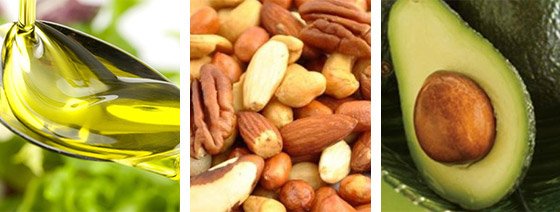
Since I like to minimize risks and the chance of things going awry while cutting, I suggest you get your fats primarily from vegetable sources. Monounsaturated and polyunsaturated fats are crucial in hormone production, managing healthy levels of cholesterol, and preventing heart disease, in addition to providing benefits to mental health, hair health, skin health, and joint health. Now that's the type of nutrient you want making up 30 percent of your calories!
Question 5 How should I supplement?
If you've read my previous articles, you'll know I'm a huge proponent of getting your calories and nutrients through whole food, and not through overdependence on supplements. In a smart cutting plan, supplements serve two functions: covering nutritional shortcomings, and providing a performance edge to your training. With those goals in mind, the supplements I would recommend to aid you through your cut are:
-
Whey protein: A quality whey protein will provide you with the fast-digesting protein your body needs immediately following training, while also adding another protein option throughout the day. Limit yourself to two shakes per day max.
-
Branched-chain amino acids: BCAAs are exceedingly helpful in preserving lean mass during a cut. Use 10 grams per day.
-
Multivitamin: A solid multivitamin will provide your body with micronutrients and vitamins that your diet doesn't have enough of—or any of, in certain cases.
-
Glutamine: If you train hard like I do, glutamine can do wonders for you in terms of recovery, which can be especially impaired on a cutting diet. Use 5-10 grams per day, particularly if you're feeling the effects of a medium or large caloric deficit.
Those four classics can definitely make a noticeable difference in your results. Two supplements that fit more into the "provide a performance edge" camp are a pre-workout and a fat burner. A good pre-workout will not only provide you with an energy kick in the butt, but also contain effective amounts of tried-and-true performance boosters such as beta-alanine, arginine, BCAAs, and taurine.

A fat burner will provide a similar boost in energy, along with ingredients that can help suppress your appetite and speed up your metabolism like caffeine and epigallocatechin gallate (EGCG).
While neither of these qualifies as a "must," pre-workouts and fat burners can definitely make cutting more bearable, allowing you to perform at or near your best even when tired.
How low do you want to go?
Now that you know the fundamentals of a cutting diet, put it to use! But remember, even the best-designed cut can be difficult. You'll be hungry at times, and often your energy level won't be where you wish it was.
Don't get discouraged! Be patient with yourself, especially if you're going to be in a deficit for a long time, or have a substantial amount of body fat you wish to cut. Consider this is a chance to cultivate both your mental and physical strength. Stick it out, and you'll be rewarded with a new and improved you.
As always, please leave any questions or feedback you might have regarding this topic in the comments section. I'll do my best to answer them all!
References
- Crovetti, R., Porrini, M., Santangelo, A., & Testolin, G. (1998). The influence of thermic effect of food on satiety. European Journal of Clinical Nutrition, 52(7), 482-488.
- Dauncey, M. J., & Bingham, S. A. (1983). Dependence of 24 h energy expenditure in man on the composition of the nutrient intake. British Journal of Nutrition, 50(01), 1-13.

Men: 10 x weight (kg) + 6.25 x height (cm) - 5 x age (y) + 5
Women: 10 x weight (kg) + 6.25 x height (cm) - 5 x age (y) - 161